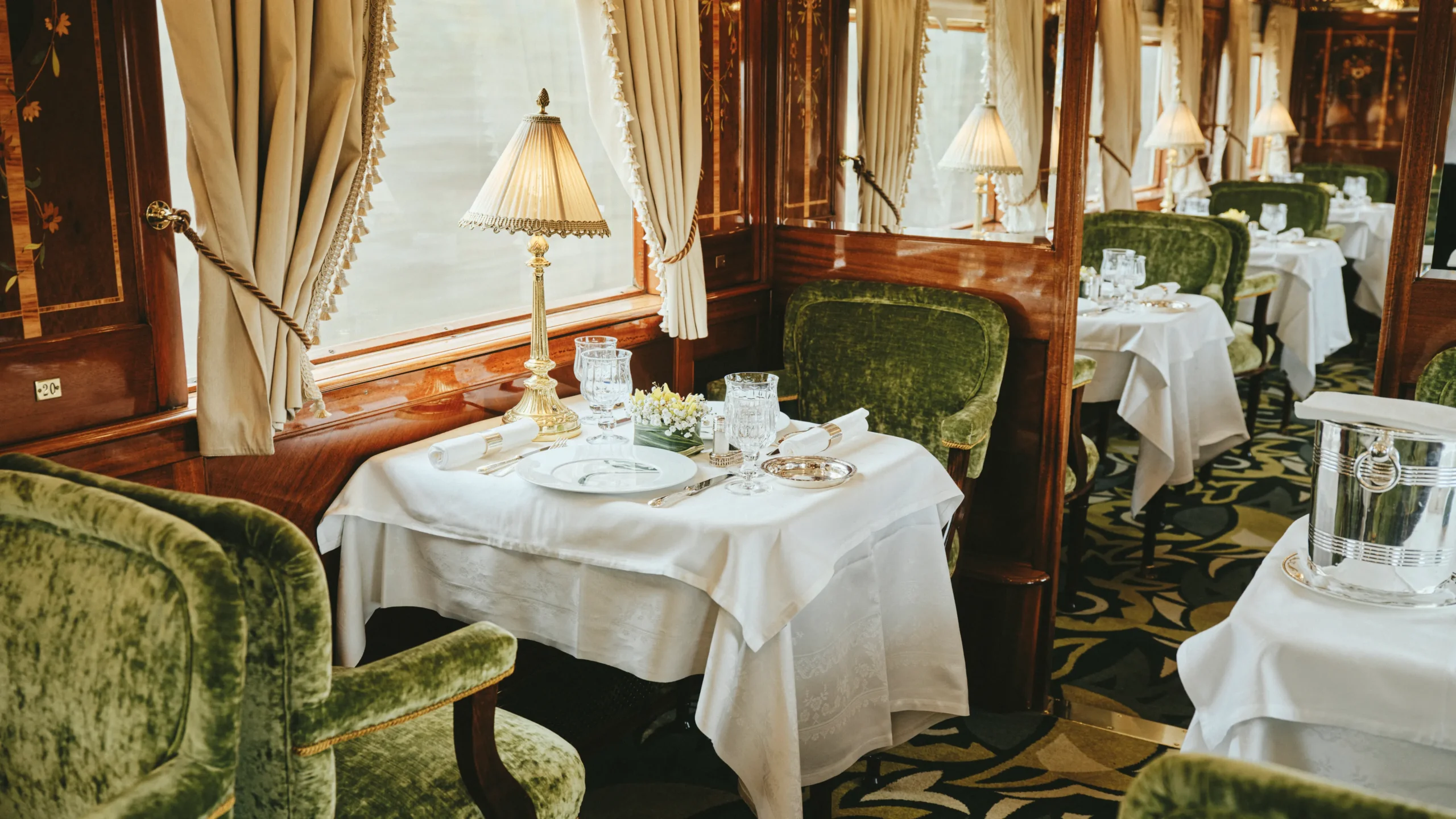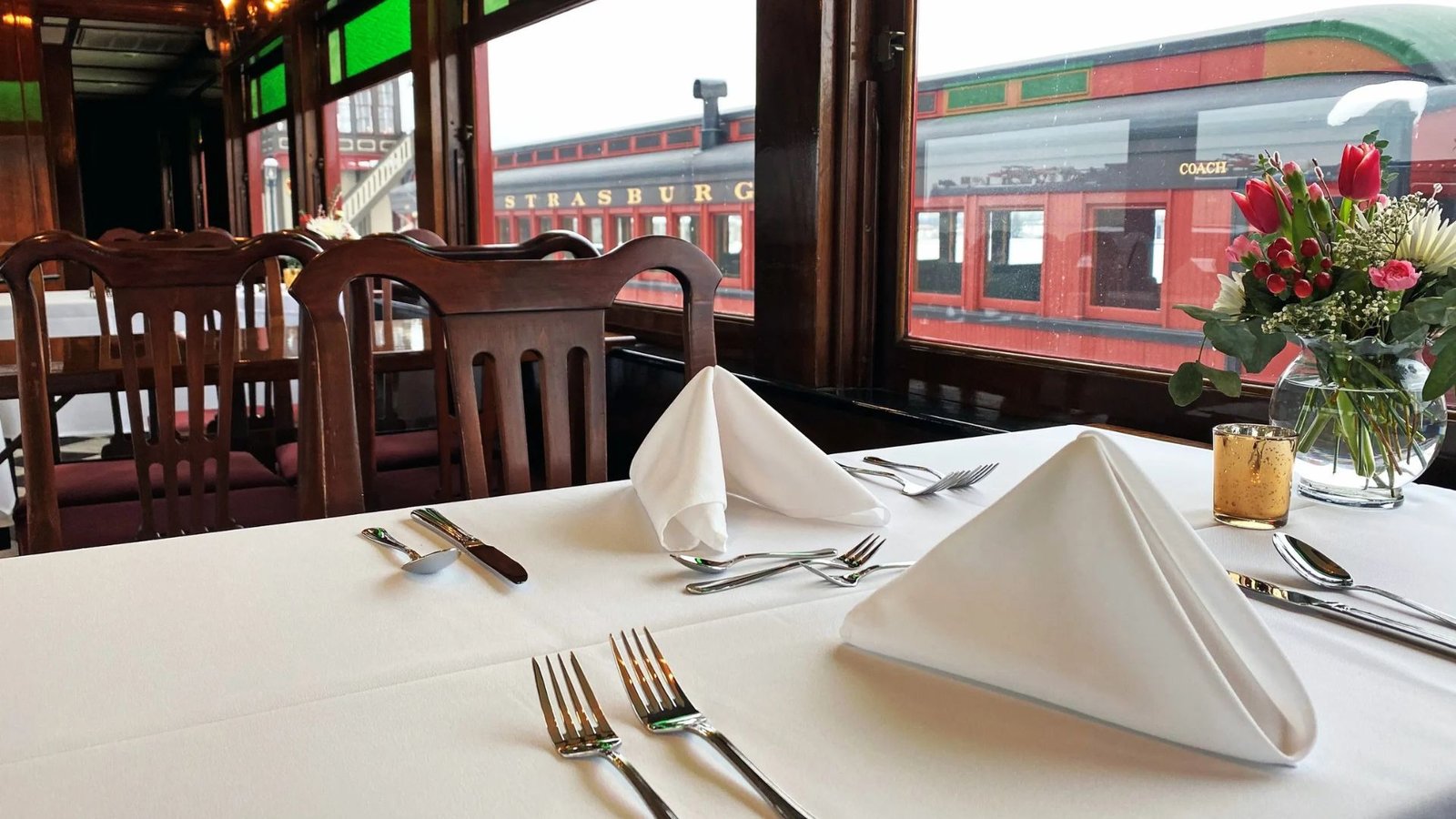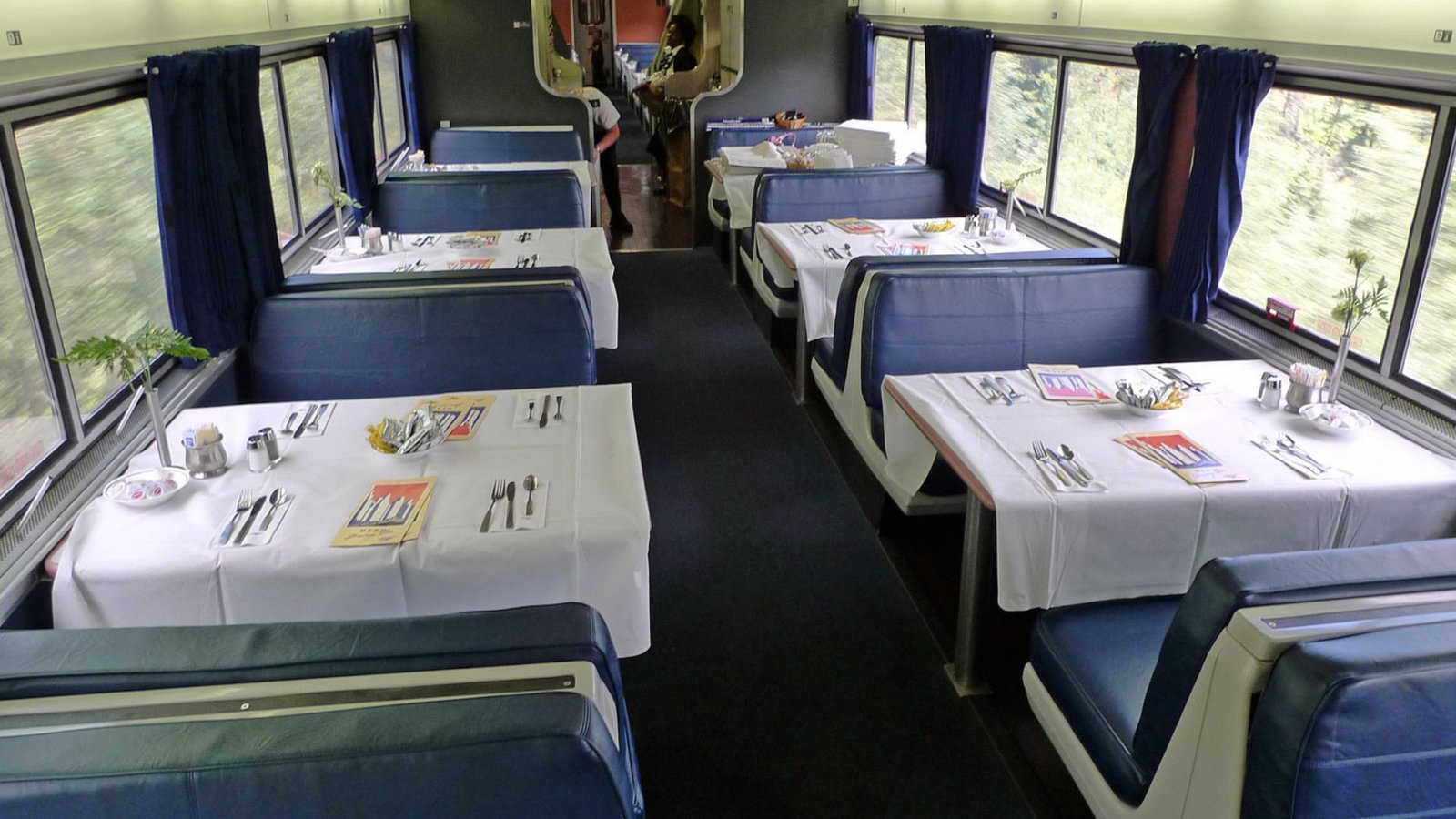Dinner trains have carved out a unique niche in the world of travel and culinary experiences. What began as a practical solution for feeding passengers on long journeys has evolved into a luxurious indulgence that combines exquisite dining with scenic rail adventures. This article delves into the captivating history of dinner trains and explores their transformation from basic dining cars to the epitome of elegance.
1. The Practical Beginnings of Dining Cars
The roots of dinner trains trace back to the mid-19th century when train travel became a dominant mode of transportation. Long journeys often left passengers with limited access to proper meals.
- The Challenge: In the early days, passengers relied on station stops for food, which often led to rushed and unsatisfactory meals.
- The Early Solutions: Rail operators introduced makeshift dining options, including small snack counters on trains.
The first full-fledged dining car, designed for comfort and utility, emerged in the 1860s. These cars allowed passengers to enjoy meals on board, marking a significant milestone in the history of rail travel.
2. George Pullman and the Dining Car Revolution
In 1868, George Pullman revolutionized the rail industry by introducing the Pullman Dining Car, a luxurious car that set new standards for onboard dining.
- Features: These dining cars featured elegant interiors, professional staff, and the ability to prepare hot meals en route.
- Impact: Pullman’s innovation transformed train journeys from mere transportation to a more comfortable and enjoyable experience.
Pullman’s success inspired other rail companies to adopt similar designs, making dining cars a staple in long-distance train travel.
3. The Golden Age of Train Dining
The early 20th century marked the golden age of rail travel, and dining cars became a symbol of luxury and sophistication.
- Opulent Dining Experiences: Trains like the Orient Express and the 20th Century Limited elevated dining with multi-course meals, fine china, and silverware.
- Regional Cuisines: Menus often featured local ingredients and flavors, offering passengers a culinary tour of the regions they traveled through.
- Social Ambiance: Dining cars became the heart of social interaction, fostering connections among passengers.
During this era, the allure of dining cars was as much about the ambiance as it was about the food, creating a unique blend of elegance and adventure.

4. Decline and Revival
The mid-20th century saw a decline in train travel due to the rise of automobiles and commercial aviation. As passenger numbers dwindled, rail companies reduced their investment in dining services.
- Challenges: Cost-cutting measures led to the replacement of fresh meals with prepackaged food, diminishing the appeal of dining cars.
- Revival: The 1980s brought a renewed interest in nostalgic travel experiences, sparking a revival of dinner trains.
Specialized operators began offering themed dinner trains, focusing on the dining experience rather than transportation. These excursions attracted food enthusiasts, history buffs, and romantic travelers alike.
5. Modern Dinner Trains: A Luxurious Affair
Today, dinner trains represent the pinnacle of experiential travel, offering a blend of luxury, culinary excellence, and breathtaking views.
- Iconic Dinner Trains:
- Napa Valley Wine Train (USA): Combines fine dining with scenic vineyard views.
- The Royal Scotsman (Scotland): Known for its gourmet meals and lavish interiors.
- Rovos Rail (South Africa): Offers a fusion of world-class dining and wildlife vistas.
- Themed Experiences: Murder mystery trains, holiday-themed rides, and historical recreations are popular modern offerings.
- Sustainability: Many operators are incorporating eco-friendly practices, such as sourcing local ingredients and using energy-efficient trains.
6. The Future of Dinner Trains
As travelers increasingly seek unique and memorable experiences, the future of dinner trains looks promising.
- Technological Innovations: Some operators are exploring augmented reality to enhance scenic views or provide historical context during rides.
- Global Expansion: Dinner trains are becoming popular in regions like Asia and South America, offering diverse cultural and culinary experiences.
- Focus on Sustainability: Electric and hybrid trains are making rail travel greener, aligning with modern environmental priorities.
Conclusion
The journey of dinner trains from functional dining cars to luxurious experiences reflects the timeless appeal of combining travel and cuisine. Whether indulging in a gourmet meal aboard a scenic route or participating in a themed dinner train event, these experiences offer a nostalgic escape from the ordinary.
For those seeking a unique way to celebrate life’s moments or simply enjoy a blend of history and luxury, dinner trains remain an unparalleled choice.




